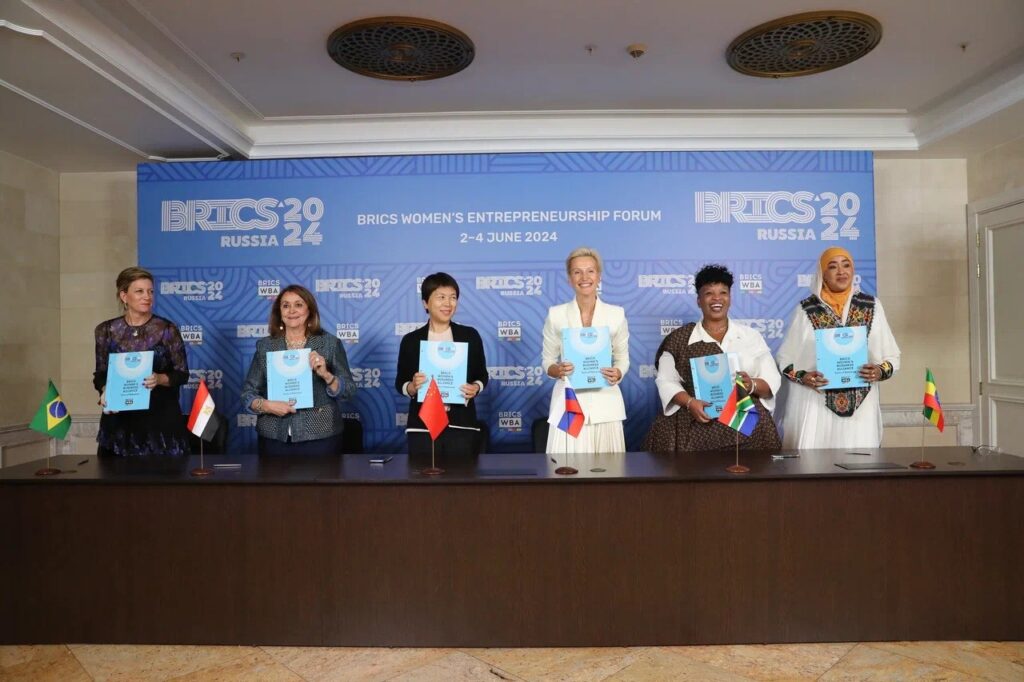In a world where international collaboration is key to fostering growth and innovation, the BRICS Women’s Business Alliance stands as a beacon of progress and empowerment. Initiated by Russia during the First International Women’s Congress of the Shanghai Cooperation Organisation in 2017, this alliance has rapidly evolved into a dynamic platform for amplifying women’s leadership across BRICS countries. As the BRICS Women’s Business Alliance held its inaugural meeting in 2020 under Russia’s chairmanship, it marked the beginning of a new era focused on strengthening business initiatives and promoting women’s empowerment. This post will delve into the significant impact and promising future of the BRICS Women’s Business Alliance, offering insights into how it aims to reshape the landscape of global business through strategic partnerships and shared goals. Join us as we explore how this influential alliance is not only breaking barriers but also paving the way for a more inclusive and thriving international business community.
Rise of the BRICS Women’s Business Alliance
The BRICS Women’s Business Alliance represents a significant milestone in international collaboration and women’s empowerment. This section explores the alliance’s origins and its core objectives.
Origins and Formation
The BRICS Women’s Business Alliance emerged from a visionary proposal by Russia at the First International Women’s Congress of the Shanghai Cooperation Organization (SCO) in 2017. This initiative recognized the untapped potential of women’s leadership in the BRICS nations.
The alliance took its first formal steps in 2020, with the inaugural meeting held under Russia’s chairmanship. This landmark event brought together influential women leaders from Brazil, Russia, India, China, and South Africa, setting the stage for unprecedented cooperation.
The formation of the alliance reflects a growing awareness of the vital role women play in driving economic growth and innovation across the BRICS countries. It represents a concerted effort to harness this potential and create a more inclusive global business landscape.
Key Objectives and Vision
The BRICS Women’s Business Alliance is guided by a set of ambitious objectives aimed at fostering women’s leadership and economic empowerment across member nations. These goals are rooted in a vision of inclusive growth and sustainable development.
Central to the alliance’s mission is the promotion of women’s participation in key economic sectors. This includes efforts to increase female representation in leadership positions, enhance access to finance for women-led businesses, and facilitate knowledge exchange among women entrepreneurs.
The alliance also focusses on addressing systemic barriers that hinder women’s economic progress. This involves advocating for policy changes, promoting gender-responsive budgeting, and championing initiatives that support work-life balance and equal opportunities in the workplace.

Impact on Women’s Leadership
The BRICS Women’s Business Alliance has made significant strides in promoting women’s leadership across member countries. This section examines the alliance’s role in empowering female entrepreneurs and fostering international collaboration.
Empowering Female Entrepreneurs
The BRICS Women’s Business Alliance has been instrumental in creating an ecosystem that nurtures and supports female entrepreneurship. Through various initiatives, the alliance has helped women overcome traditional barriers to business success.
One of the key strategies has been improving access to finance for women-led businesses. The alliance has worked with financial institutions to develop tailored lending products and has advocated for policies that make credit more accessible to women entrepreneurs.
Education and skill development have also been at the forefront of the alliance’s efforts. According to the BRICS Women’s Development Report 2023, numerous training programs and mentorship initiatives have been launched, equipping women with the knowledge and skills needed to thrive in the business world.
Advancing International Collaboration
The BRICS Women’s Business Alliance has emerged as a powerful platform for fostering international collaboration among women leaders. This cross-border cooperation has opened up new avenues for business growth and innovation.
Through regular summits and networking events, the alliance facilitates connections between women entrepreneurs from different BRICS countries. These interactions have led to joint ventures, knowledge sharing, and the creation of new market opportunities.
The alliance also promotes best practice sharing across borders. Successful business models and strategies from one BRICS nation are often adapted and implemented in others, creating a ripple effect of positive change throughout the member countries.
Future Prospects and Challenges
As the BRICS Women’s Business Alliance continues to evolve, it faces both exciting opportunities and significant challenges. This section explores the potential for growth within BRICS countries and the obstacles that need to be overcome.
Opportunities in BRICS Countries
The BRICS nations present a wealth of opportunities for women in business, driven by their rapidly growing economies and evolving social landscapes. These countries are increasingly recognizing the value of women’s contributions to economic growth.
In India, for example, government initiatives like “Start-up India” have created a conducive environment for women entrepreneurs. China’s digital economy boom has opened up new avenues for women in tech and e-commerce.
Brazil’s focus on sustainable development aligns well with women-led businesses in green sectors. South Africa’s chairship in 2023 highlighted opportunities in sectors like agriculture and renewable energy.
Overcoming Barriers in Business Initiatives
Despite progress, women entrepreneurs in BRICS countries continue to face significant challenges. Addressing these barriers is crucial for the alliance’s long-term success and the realization of its vision.
One of the primary challenges is the persistent gender gap in access to resources. This includes not only financial capital but also networks, mentorship, and technology. The alliance is working to bridge this gap through targeted programs and partnerships.
Cultural norms and stereotypes also pose obstacles to women’s advancement in business. The BRICS Women’s Business Alliance is actively working to change these perceptions through advocacy and by showcasing successful women leaders.
Balancing work and family responsibilities remains a significant challenge for many women entrepreneurs. The alliance is promoting policies and practices that support work-life balance and equal sharing of domestic responsibilities.













